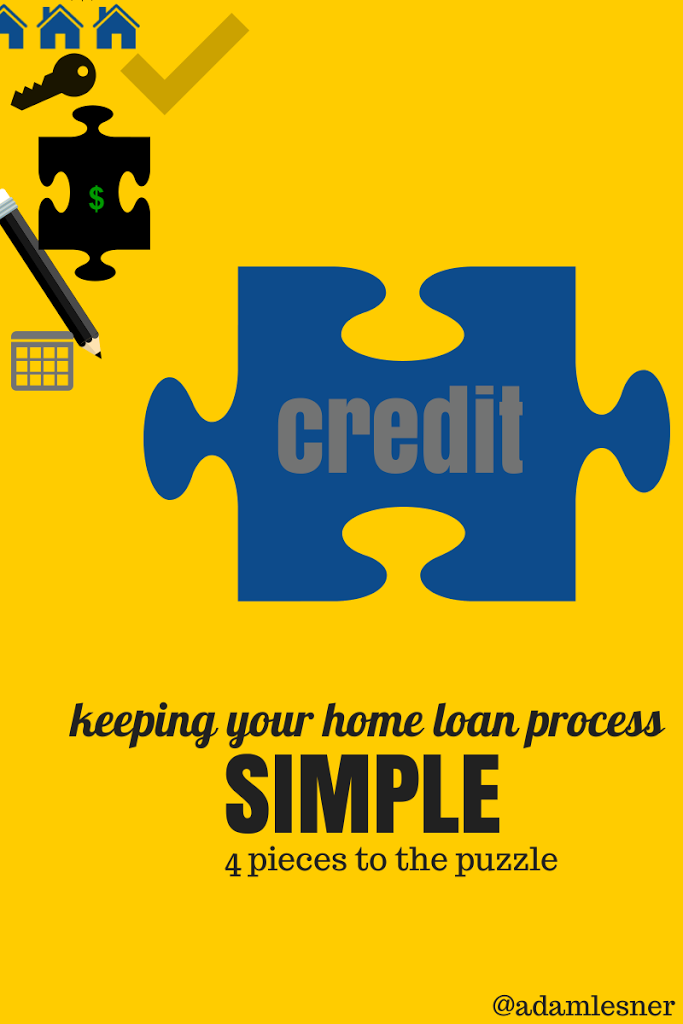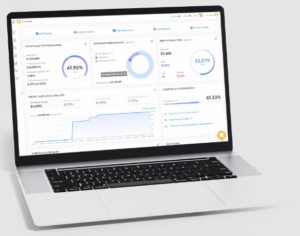Prepping Your Credit for a Mortgage
When you’re finally ready to become a homeowner; it is certainly an exciting and anxious time! The last thing anyone wants to do is find out last minute that there is a blemish on their credit report that cannot be resolved quickly enough to close on your dream home in time. In Part 1 of the “keeping your home loan process simple” series we looked at all the 
Your credit report is your opportunity to show your credibility to your lender. It serves as a reference of the liabilities you have paid in the past and present.
Your credit report is heavily considered with your approval because it gives an indication as to how you treat the responsibility of paying items you’re liable for. If you have 0 previous derogatory marks, and you have 3-4 tradelines that you have been paying on time for 24 months; your credit should be in good shape. There is no question that everyone’s situation is unique in many ways.
Understanding how information on your credit is evaluated can “make you” or “break you”. If you can anticipate issues that you may encounter; you’re really putting yourself a step ahead of the game. Below are a few explanations of common terms to help decipher what a credit report shows.
Score
There are loan programs available that allow you to buy a home with a credit score below 640. However, the objective is simplicity. So with that in mind; a good goal would be to make an effort to be at 680 or higher as a middle score (as reported by Experian, Equifax, and Transunion). Anything 740 and higher is considered excellent.
History
The history on your credit report is just as important of a factor as your credit score. Anything derogatory in the last 10 years is likely to be available to the eyes of the lender.
Tradeline
Any recurring debt that is reported by the credit bureaus on your credit report is a tradeline. Examples include but are not 
Debt-to-income Ratio
Your lender will use your credit report as a starting point to help determine what your debt to income ratio is. Your lender will take into account the liabilities that show on your credit report, and compare that with how much your verifiable monthly income is. Of course your new mortgage, property taxes, property insurance, and mortgage insurance (if applicable) will be factored into the equation. You certainly can expect any child support, alimony, and 401k loans to be factored into your debt as well.
Example: Mr. Homebuyer has 3 credit cards that total 100/month, a mortgage of 900/month (including taxes and insurance), and makes 4,000/month. Mr. Homebuyer’s debt to income ratio is .25 (or 25%). Debt / Income = Debt to income ratio. To keep things simple you want to aim to be below 43% debt to income ratio.
Derogatory Items
- Late payments. Any liability that is reported on your credit report showing a late payment of 30 days or more will have a negative impact on your scores. Upholding your end of the bargain (paying on time) is a significant part of establishing good credit.
- Collections. These can be a result of an unpaid cell phone bill or even a medical bill you forgot to pay. Really, almost anything that you agreed to pay for in any fashion can be sent to a collection agency if it remains unpaid. It’s in your best
interest to get collections resolved as quickly as possible once you’re aware of them. In some cases collection agencies will accept less than what is owed in order to resolve the debt. However, paying the collection won’t necessarily improve your credit. To improve your scores after paying the collection; request a “letter of deletion” from the collection agency. Basically it’s a letter confirming the collection shown on your credit report has been paid in full, and will be deleted from your credit report. If you can convince the collection agency to do that then make sure you ask for a copy as well. You’ll want to send a copy of that to all 3 credit bureaus. Some collection agencies will do this; others won’t. It’s definitely worth a try. You may need to talk to a manager and get it escalated. If you have 1 or 2 medical collections that are only a few hundred dollars you don’t need to lose sleep over that. Medical collections are not treated as severely as regular collection (depending on the size of the medical collection).
- Tax liens. If you have taxes that you owe the IRS they will issue a lien, and report that to the credit bureaus if they are not paid by the due date. The best thing to do is pay your taxes on time because if there is a lien outstanding; the IRS may start tacking on interest to the balance that is owed. Any tax liens outstanding will hinder your ability to obtain home financing until that has been paid in full. You’ll need to provide your lender with proof from the IRS that it’s paid in full and clear.
- Bankruptcy. There are two most commonly used bankruptcy types that consumers use; chapter 7 and chapter 13. You would need to consult with an attorney to decide which is more fitting for your situation. Guidelines related to mortgage approval after bankruptcy are constantly changing. As a rule of thumb you want to be at least 3 years out from when the bankruptcy was discharged before looking to obtain financing. Immediately after the bankruptcy is discharged it’s best to make every effort to “reestablish” your credit. That involves getting a couple new tradelines in your name (credit card, personal loan, student loan…). Once you have shown a 24 month history of reestablished credit; you’re setting yourself up for success.
- Foreclosure and short-sale. Similar to bankruptcies; you’ll want to be at minimum of 3 years out from when the foreclosure or short-sale was closed. Again, guidelines are constantly changing on these items. Working on getting your credit reestablished as explained in the above bankruptcy explanation should be a high priority. Check here for changes on this.
- Repossession. If you decide to “give your car back to the bank,” you can expect repercussions. Make sure that once it’s repossessed that there are no lingering debts affiliated with that. It’s a good idea to make sure all of your other liabilities are on time, and in good standing for 24 months prior to seeking home financing.
A couple closing tips…
Credit glossary word of the week: CHARGE-OFF
A debt that is declared by the creditor as being noncollectable. This means the lender considers the money it loaned to the borrower is lost. Lenders use this as a last resort, once all collection efforts have failed. A bankruptcy filing often results in several accounts becoming charged-off. Charge-off s usually lower credit ratings. Also known as bad debt, charged-off account, charged-off balance, charged to loss, charged to profit and loss.
How to Build Your Credit to Buy a House
Watch Video:
Listen to Podcast:










Leave a Reply
Your email is safe with us.